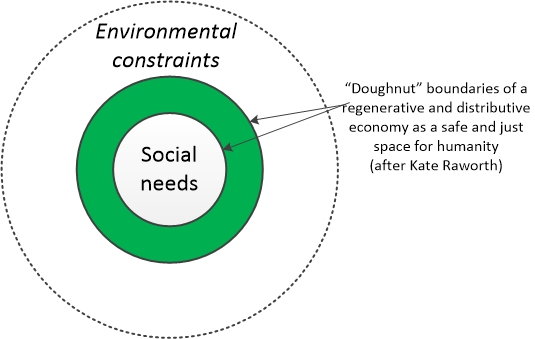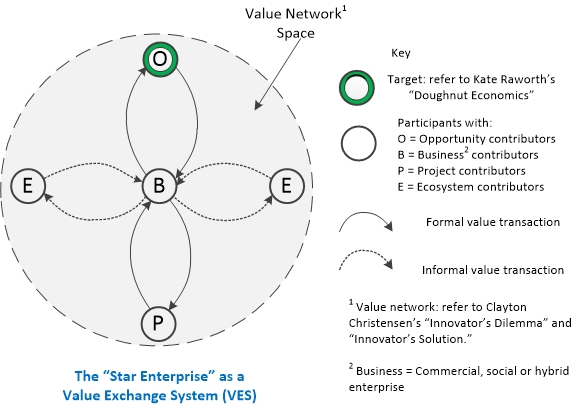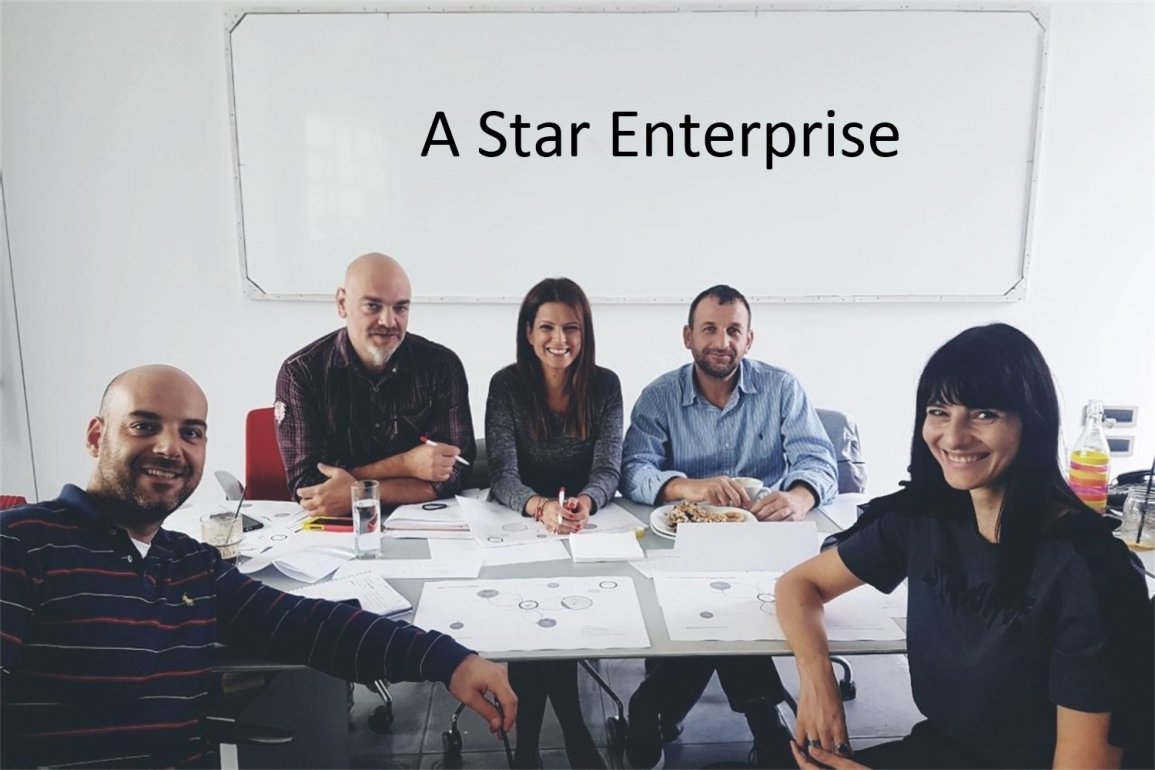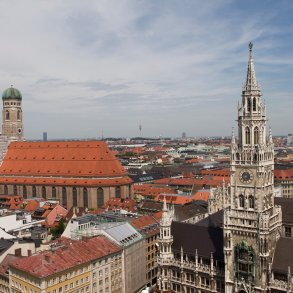By David Meggitt for Enlivening Edge Magazine
This article addresses two challenges. The first is that leading management thinkers have been urging us to move from Management 1.0 to Management 2.0. Now, a race is on to define the requirements for Management 4.0.
The second is that GDP growth, an objective for most mainstream economists, is leading us into a bleak future. Many thinkers are appraising afresh the nature of prosperity. This includes the beneficial impacts of de-growth, the environmental state of our planet, and the social plight of its human inhabitants (Jackson.) There is a clamour for change at every level in policies and practices.
Doughnut Economics and Evolutionary Purpose
 An imaginative way to provide purpose and direction through economics for a healthier future is the concept of the Doughnut Economy. The figure shows the doughnut in simplified form, but what does it mean?
An imaginative way to provide purpose and direction through economics for a healthier future is the concept of the Doughnut Economy. The figure shows the doughnut in simplified form, but what does it mean?
Kate Raworth, its originator, writes “Humanity’s 21st century challenge is to meet the needs of all within the means of the planet…The Doughnut of social and planetary boundaries is a playfully serious approach to framing that challenge, and it acts as a compass for human progress this century.”
However, as yet, there is too little room in organizations for asking how and why real flesh-and-blood people act and make choices. If a way could be found, for example, for you to co-create a safe and just space for humanity, would you be interested?
Business Models to mobilize holistically
Key participants in any economy are commercial and social enterprises. For decades, specialists have been cultivating in them communities of practice (COPs) aimed at generating a collective intelligence to guide operations. Sadly, it is difficult to find business models which explicitly recognise and express COPs’ potential.
However, we do recognise in enterprises the existence of informal networks and their co-creative capacity. Further, they proliferate, not just within the boundaries of enterprises, but can be seen to extend to the wider value networked business ecosystem. Indeed, many are mobilized through enterprises that embrace “open innovation.”
The Star Enterprise that incorporates wholeness
 The business model of the Star Enterprise (see figure) focuses its value propositions for product and service offerings on the opportunities presented by the Doughnut Economy. It examines those trends and events shaping the world regardless of whether the enterprise is commercial, social or a hybrid combination of the two, and opts to take appropriate initiatives.
The business model of the Star Enterprise (see figure) focuses its value propositions for product and service offerings on the opportunities presented by the Doughnut Economy. It examines those trends and events shaping the world regardless of whether the enterprise is commercial, social or a hybrid combination of the two, and opts to take appropriate initiatives.
Of course, such initiatives cannot be done in isolation. At an enterprise level, there are associated suppliers, customers, customers’ customers, channels, standards bodies, government agencies and many other participants.
Here, formal and informal collaborations (as value transactions) are needed to expedite innovation. The space within which this wider activity takes place is called a “value network” or business ecosystem.
Hence a Star Enterprise’s business model explicitly incorporates its formal processes and the informal networks that weave between them. Crucially, it can be conceived as a Value Exchange System (VES) which represents the business model, business ecosystem and internal value transactions.
Agency to contribute and self-manage
VES, see handbook, is underpinned by the fundamental essence of an economy, the exchange. It also represents how organizations really work. Significantly, when used to represent business models et al, VES:
- provides power for people, whatever their role, to contribute to enterprise success,
- enables organizational change to be achieved more easily.
Consequently, whether in a Star Enterprise or not, VES is now available to you to make a positive difference in the world, efficiently, effectively and enjoyably.
Supportingly, a physical space cherishing that aspiration is POM inspired and built by the author’s co-partner Christie Sarri and located at the home of the originators of Western Civilization, the Bronze Age Minoans, on the Greek island of Crete.
An emerging theory supporting network attributes and “unmanagement” capabilities to support self-management is We Space developed by Dr Charles Ehin in the USA.
I hope you are interested!
If so, the formulation of the Metisa Programme should help sharpen and extend the impact of the developments in organizational consciousness that Enlivening Edge is devoted to.
Sharpen, in order to address generic yet specific concerns of organization viability and integrated assurance, scoping applications of information and communication technologies, and reformulating project management activities.
Extend, perhaps, by bringing to bear on organization configurations the perspective of a civil engineering discipline which thrives by establishing firm foundations for the structures that surmount them.
Metisa’s intention is to support ecologically safe and socially just spaces in which humanity can thrive by encouraging the formation of “Star Enterprises.”
It does this by using VES and related products and services to facilitate the co-creation and successful manifestation of underpinning business models. Links are available for you to subscribe to this endeavour via Meggitt Bird LLP or contact the author.
 David Meggitt is a Chartered Civil Engineer, alumnus of PA International Management Consultants (Project Planning Division) and Planning Research Corporation, and co-founder of Meggitt Bird LLP.
David Meggitt is a Chartered Civil Engineer, alumnus of PA International Management Consultants (Project Planning Division) and Planning Research Corporation, and co-founder of Meggitt Bird LLP.
After an early career designing bridges he moved to addressing organizational challenges in government and private commercial enterprises in the UK, North Africa and Hong Kong.
During the last 15 years, he has focused on organizational design that recognises the power of informal networks for boosting co-creativity leading to the emergence of the Value Exchange System (VES) and the publication of the first co-authored handbook on VES.
His email address is [email protected]
Featured image from author.




